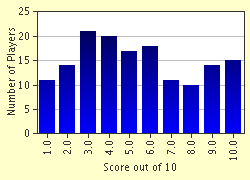Quiz Answer Key and Fun Facts
1. Which of the following spatial scales is considered to be the largest?
2. Which of the following scales best characterizes a typical convective thunderstorm?
3. Which of the following scales best describes a tornado?
4. What is the basic definition of geopotential height?
5. What is a typical value for sea-level pressure (in mb or hPa) near the equator?
6. What is the standard meteorological convention for winds?
That is, how are they named?
7. The term "synoptic scale" typically refers to approximately what time frame?
8. What specific time zone are the vast majority of global meteorological observations reported in?
9. What are the most widely used synoptic times for taking upper air observations?
10. Finally, what do you call the instrument that records and electronically relays information about temperature, pressure, humidity, etc.. as it moves upward in the atmosphere?
Source: Author
hutch2000
This quiz was reviewed by FunTrivia editor
crisw before going online.
Any errors found in FunTrivia content are routinely corrected through our feedback system.

